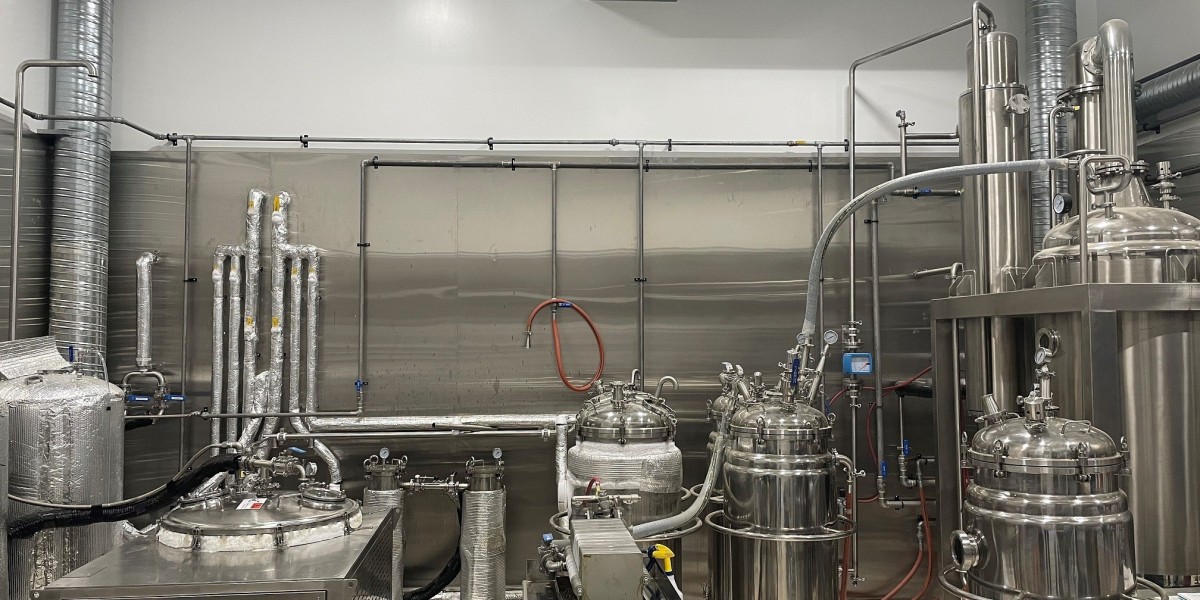Choosing the right Jacketed Mixing Tank is a critical decision for businesses in industries such as food and beverage, brewing, and extraction. These tanks are essential for processes that require precise heating, cooling, and mixing of liquids. Selecting a poorly suited tank can lead to inefficiencies, product inconsistencies, and even safety hazards. To make an informed choice, it’s important to consider several factors, including size, material, agitator type, heating and cooling requirements, automation options, and customization capabilities. By understanding these key elements, businesses can invest in a Jacketed Mixing Tank that enhances productivity and ensures consistent product quality.
Factors to Consider: Size, Material, and Agitator Type
One of the first considerations when selecting a Jacketed Mixing Tank is the tank’s size. The capacity of the tank should match your production needs, taking into account both current requirements and potential future growth. Choosing a tank that is too small can limit production efficiency, while a tank that is too large may lead to unnecessary energy consumption and higher operational costs. Cedarstone Industry offers a range of sizes to accommodate everything from small batch production to large-scale operations, ensuring scalability for growing businesses.
The material of construction is another critical factor. Most Jacketed Mixing Tanks are made from stainless steel, which offers excellent durability, corrosion resistance, and hygienic properties—essential for food, beverage, and pharmaceutical applications. High-quality stainless steel ensures that your tank meets regulatory standards and maintains the integrity of the products being processed. Cedarstone Industry specializes in high-grade stainless steel tanks, designed to meet ASME and 3A certification requirements, guaranteeing both safety and longevity.
The agitator type also plays a significant role in tank performance. Different mixing applications require different agitator designs, such as anchor, turbine, or propeller styles. The choice depends on the viscosity of the material, the mixing speed required, and whether gentle or vigorous mixing is needed. Selecting the right agitator ensures optimal mixing efficiency, uniformity, and reduced processing time.
Heating and Cooling Requirements
A defining feature of a Jacketed Mixing Tank is its ability to precisely control the temperature of the contents through an external jacket. This jacket allows for the circulation of heating or cooling fluids, making it suitable for processes that require temperature-sensitive operations. When choosing a tank, consider the specific heating and cooling requirements of your production process.
For example, in the food and beverage industry, maintaining precise temperatures is essential to prevent spoilage, achieve proper consistency, and ensure safety. Similarly, in brewing, controlling the temperature of mash or wort is critical for flavor consistency. Cedarstone Industry provides tanks equipped with advanced heating and cooling jackets that allow for rapid temperature changes while maintaining uniform heat distribution. Businesses can select from a variety of heating options, including steam, hot water, or electric jackets, depending on operational needs.
Proper insulation of the jacket is also essential to minimize energy loss and reduce operational costs. Insulated jackets maintain consistent temperatures over long periods, enhancing energy efficiency and ensuring that the production process remains stable.
Automation and Control System Needs
Modern Jacketed Mixing Tanks often come equipped with sophisticated automation and control systems. These systems allow operators to monitor and adjust temperature, mixing speed, and timing with precision, reducing the risk of human error and increasing overall efficiency. When selecting a tank, consider the level of automation required for your process.
Basic systems may include manual controls for heating, cooling, and agitator speed, suitable for simpler operations. More advanced setups can feature programmable logic controllers (PLCs), touchscreen interfaces, and remote monitoring capabilities. These systems enable precise control over batch processes, improve repeatability, and provide valuable data for quality control.
Cedarstone Industry’s tanks are designed to integrate seamlessly with automation systems, allowing businesses to achieve consistent results with minimal manual intervention. By investing in a tank with the right control system, companies can optimize production, reduce waste, and improve operational efficiency.
Custom Design Considerations
Every production process is unique, and off-the-shelf solutions may not always meet specific requirements. Customization is a key advantage when choosing a Jacketed Mixing Tank. Cedarstone Industry offers fully customizable tanks to address the exact needs of each client, including specific dimensions, jacket configurations, agitator types, and integration with other process equipment.
Custom tanks can also include specialized features such as sanitary fittings, CIP (Clean-In-Place) systems, and reinforced structures for high-pressure applications. By collaborating with experienced engineers, businesses can ensure that the tank design aligns perfectly with production goals and regulatory requirements. Custom design also allows for future-proofing, ensuring that tanks remain adaptable as production demands evolve.
In addition, customization can extend to the aesthetics and layout of the tank, which may be important for facilities where space optimization and operational workflow are key considerations. Cedarstone Industry’s team works closely with clients to provide tailored solutions that maximize both efficiency and functionality.
Conclusion: The Importance of a Well-Chosen Jacketed Tank for Optimized Production
Selecting the right Jacketed Mixing Tank is more than just choosing a piece of equipment—it is an investment in efficiency, product quality, and operational reliability. By carefully considering factors such as tank size, material, agitator type, heating and cooling capabilities, automation options, and customization, businesses can ensure they select a tank that meets both current and future production needs.
Cedarstone Industry’s expertise in designing and manufacturing high-quality stainless steel tanks ensures that clients receive equipment that adheres to the highest standards of safety and performance. A well-chosen Jacketed Mixing Tank not only enhances the mixing process but also reduces downtime, improves consistency, and provides a long-lasting solution for a wide range of industries. Investing in the right tank is essential for companies looking to maintain competitive production standards while delivering high-quality products to their customers.






